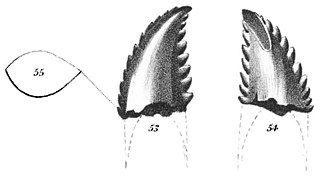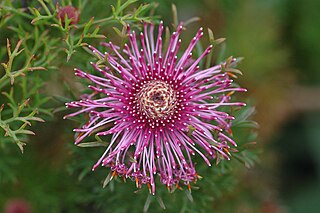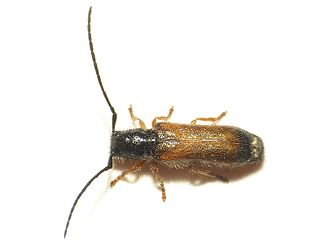Related Research Articles
Pope Stephen VI was the bishop of Rome and ruler of the Papal States from 22 May 896 to his death. He is best known for instigating the Cadaver Synod, which ultimately led to his downfall and death.
Pope Sergius III was the bishop of Rome and nominal ruler of the Papal States from 29 January 904 to his death. He was pope during a period of violence and disorder in central Italy, when warring aristocratic factions sought to use the material and military resources of the papacy. Because Sergius III had reputedly ordered the murder of his two immediate predecessors, Leo V and Christopher, and allegedly fathered an illegitimate son who later became pope, John XI, his pontificate has been variously described as "dismal and disgraceful", and "efficient and ruthless".
Pope Theodore II was the bishop of Rome and ruler of the Papal States for twenty days in December 897. His short reign occurred during a period of partisan strife in the Catholic Church, which was entangled with a period of violence and disorder in central Italy. His main act as pope was to annul the recent Cadaver Synod, therefore reinstating the acts and ordinations of Pope Formosus, which had themselves been annulled by Pope Stephen VI. He also had the body of Formosus recovered from the river Tiber and reburied with honour. He died in office in late December 897.
Pope Formosus was the bishop of Rome and ruler of the Papal States whose pontificate lasted from 6 October 891 until his death on 4 April 896. His reign as pope was troubled, marked by interventions in power struggles over the Patriarchate of Constantinople, the Kingdom of West Francia, and the Holy Roman Empire. Because he sided with Arnulf of Carinthia against Lambert of Spoleto, Formosus's remains were exhumed and put on trial in the Cadaver Synod. Several of his immediate successors were primarily preoccupied by the controversial legacy of his pontificate.
Pope Romanus was the bishop of Rome and ruler of the Papal States from August to November 897. His short reign occurred during a period of partisan strife in the Catholic Church, amid the violence and disorder in central Italy. His pontificate ended when he was deposed and confined to a monastery.

The Asian arowana comprises several phenotypic varieties of freshwater fish distributed geographically across Southeast Asia. While most consider the different varieties to belong to a single species, work by Pouyaud et al. (2003) differentiates these varieties into multiple species. They have several other common names, including Asian bonytongue, dragonfish, and a number of names specific to the different color varieties.

Troodon is a former wastebasket taxon and a potentially dubious genus of relatively small, bird-like dinosaurs known definitively from the Campanian age of the Cretaceous period. It includes at least one species, Troodon formosus, known from Montana. Discovered in October 1855, T. formosus was among the first dinosaurs found in North America, although it was thought to be a lizard until 1877. Several well-known troodontid specimens from the Dinosaur Park Formation in Alberta were once believed to be members of this genus. However, recent analyses in 2017 have found the genus to be undiagnostic and referred some of these specimens to the genus Stenonychosaurus and others to the genus Latenivenatrix.

The Cadaver Synod is the name commonly given to the ecclesiastical trial of Pope Formosus, who had been dead for about seven months, in the Basilica of St. John Lateran in Rome during January 897. The trial was conducted by Pope Stephen VI, the successor to Formosus' successor, Pope Boniface VI. Stephen had Formosus' corpse exhumed and brought to the papal court for judgment. He accused Formosus of perjury and of having acceded to the papacy illegally. At the end of the trial, Formosus was pronounced guilty and his papacy retroactively declared null.

Isopogon formosus, commonly known as rose coneflower, is a species of flowering plant in the family Proteaceae and is endemic to the south-west of Western Australia. It is a shrub with divided leaves with cylindrical segments, and spherical to oval heads of pink or red flowers.
Auxilius of Naples was an ecclesiastical writer. To him are attributed a series of writings that deal with the controversies concerning the succession and fate of Pope Formosus (891–896), and especially the validity of the orders conferred by him. Auxilius was a Frank, who was ordained a priest, or perhaps only a deacon, in Rome by Formosus, and lived later in southern Italy, apparently at Naples.

The flower hat jelly is a species of hydromedusa in the hydrozoan family Olindiidae. Although they look like a jellyfish, they actually belong in the class Hydrozoa, while true jellyfish belong in class Scyphozoa. Flower hat jellies occur in the northwestern Pacific off central and southern Japan, and South Korea's Jeju Island.. The adult form of the flower hat jelly only lives a few months and is typically seen from December to July, with peaks in April and May. During the day they rest on the bottom, often among rocks or algae, but at night they float up to hunt for their prey, typically small fish.

Tetrops praeustus is a small longhorn beetle found in Europe. It has recently been introduced in eastern North America.

Tetrops is a small genus of longhorn beetles found in Eurasia. One species, Tetrops praeustus, has recently been introduced in Eastern North America.
Anaesthetis confossicollis is a species of beetle in the family Cerambycidae. It was described by Baeckmann in 1903. It is known from Russia, China, Mongolia, Siberia and Japan.
Anaesthetis lanuginosa is a species of beetle in the family Cerambycidae. It was described by Baeckmann in 1903. It is known from Central Asia and Iran.
Nodocapitus is a genus of velvet worm in the Peripatopsidae family. N. formosus is found in Queensland, Australia, N. inornatus is found in New South Wales, and N. barryi is found in both of these states.
Tetrops bicoloricornis is a species of beetle in the family Cerambycidae. It was described by Nikolay Nikolaevich Plavilstshchikov in 1954. It is known from Kyrgyzstan.
Tetrops elaeagni is a species of beetle in the family Cerambycidae. It was described by Nikolay Nikolaevich Plavilstshchikov in 1954. It is known from Russia, Kazakhstan, China, Uzbekistan, and Turkmenistan.
Tetrops gilvipes is a species of beetle in the family Cerambycidae. It was described by Faldermann in 1837, originally under the genus Anaetia. It has a wide distribution in Europe. It feeds on Pyrus communis.

Tetrops starkii is a species of beetle in the family Cerambycidae. It was described by Chevrolat in 1859. It has a wide distribution in Europe. It feeds on Fraxinus excelsior and Fraxinus angustifolia.
References
- ↑ BioLib.cz - Tetrops formosus. Retrieved on 8 September 2014.